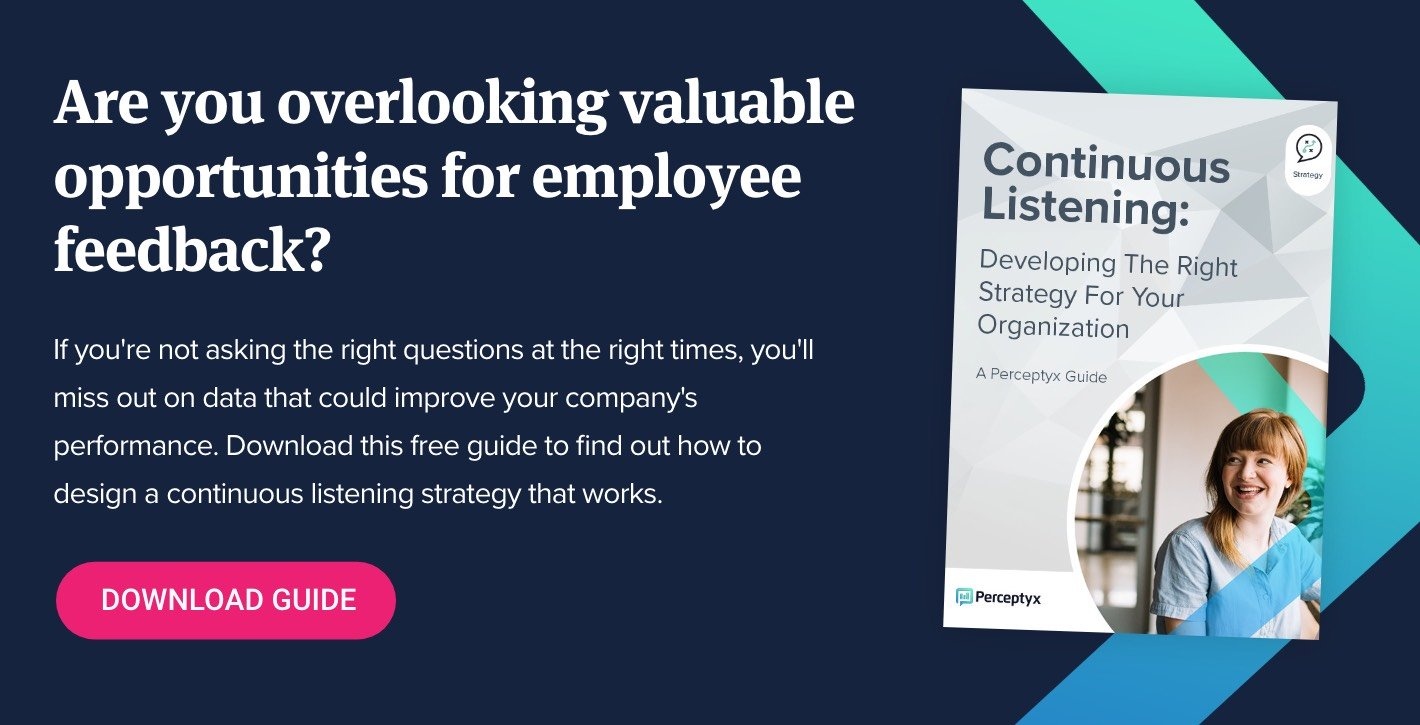2020 has taught us that employee listening is even more important during difficult times.
Emerging results from organizations that have continued to survey or added survey opportunities since the beginning of the pandemic demonstrate clearly that surveying during COVID-19 (and other times of unrest) is crucial. While your instinct may be to “wait and see” or pause surveying to avoid negative scores, continuing to listen during times like these results in dramatically different experiences for engagement, and outcomes for employees, leadership, and the organization overall.
Continuous Listening During COVID-19 Drives Engagement
Positive effects from surveying employees are not only limited to the employee experience; they are related to business outcomes as well. At Perceptyx, we partnered with the Josh Bersin Academy to survey nearly 1,400 HR/Talent/L&D professionals, and found that organizations that surveyed their employees during the pandemic were more likely to meet or exceed expectations, be customer satisfaction leaders, and adapt well to change, among other metrics of success. Organizations that not only surveyed, but also implemented quick actions, were even more successful.
As depicted below, it is clear that a responsive continuous listening strategy is more in sync with positive business outcomes. Capturing employee experience and sentiment data and, more importantly, acting on these data, help organizations respond effectively and navigate through turbulent times.
How Surveying During Turbulence Helps Everyone
Employees feel more valued when they are kept informed about what’s going on at the company, and are included in the feedback loop. Organizations may assume they understand the employee experience, but are our usual assumptions about people valid during an unprecedented period? Organizations with sustained engagement continue to drive an evidence-based strategy with return to work surveys; remote work surveys; resilience surveys; diversity, inclusion, and belonging surveys; etc.
HRBPs who are armed with facts and data are better prepared to provide guidance to leaders. This is similar to the 2007-2008 financial crisis, but that burden was primarily on CEOs and finance leaders. The magnitude of the current crisis is similar, but it is falling on CHRO/HR shoulders to keep people afloat, connected, and engaged. Empowering HR with data and the ability to make surgical interventions in an adaptive environment is crucial, as they are also struggling with work-life balance and burnout.
Senior leadership shouldn’t be making decisions about the way forward (closing 2020, preparing for 2021) without clear and compelling data that provides clear insights about the current employee experience. Assumptions that are not backed by current data can be incorrect, and given the unrest caused by COVID-19 and ongoing social issues, without data confirmation there can be no certainty.
Compare/Contrast Case Studies
Those who have/have not surveyed strategically in 2020. By comparing two profiles of survey strategies in reaction to the pandemic and other unrest, clear benefits begin to emerge in those who chose to keep feedback lines open with employees.
The evidence is in and continues to grow, that those who survey during challenging times see better outcomes than those who either do not survey, or do not employ responsive survey strategies.

